The reconstruction of the Budapest bridges was in full swing in the spring of 1948. Margit and Chain Bridge began to take shape after all the Danube bridges were blown up by the retreating German troops in January 1945. The question for the specialists in the spring of 1948 was which bridge to continue the reconstruction with. Two previous crossings were still left to be built, the Erzsébet Bridge and the former Horthy Bridge, which at that time was no longer referred to as that, but as the Boráros Square bridge.
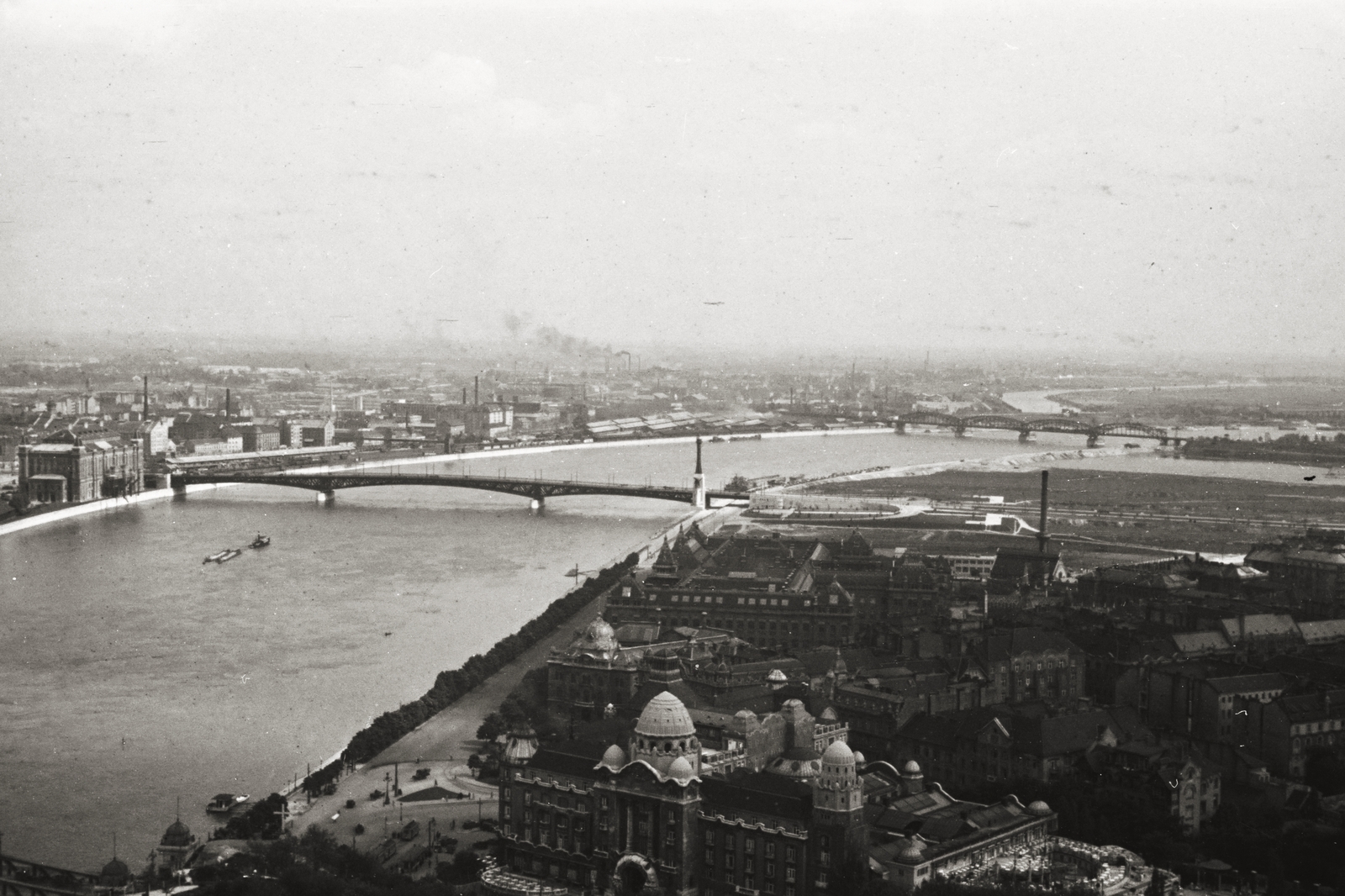
The Horthy Miklós Bridge in 1939 (Photo: Fortepan/No.: 134160)
The dilemma was not the choice between these two bridges, because they wanted to build the Erzsébet Bridge in its original form but only later, because at that time it was much less important for traffic, and it represented the most complicated task. The specialists were more concerned with whether the work should continue with the restoration of the Boráros Square bridge, or whether the Árpád Bridge, which had been abandoned since 1943 but survived the war with only minor damage, should be completed.
The same dilemma occurred between the two wars. At the end of the 1920s, there were arguments and counterarguments in favour of both crossings, and although from a traffic point of view the northern bridge between Óbuda and Hungária Boulevard, the later Árpád Bridge, would have been more important, yet in the early 1930s they decided on the Boráros Square one. The reason for this was that the Great Depression broke out and the appalling unemployment that followed was tried to be dealt with by public works that could be started relatively quickly, but at the same time the Boráros Square bridge was a simpler structure and it was also better prepared. For the larger, more complicated Árpád Bridge (where the Danube splits into several branches), new plans were requested, for which 60 (!) engineers were employed, specifically to reduce engineer unemployment.
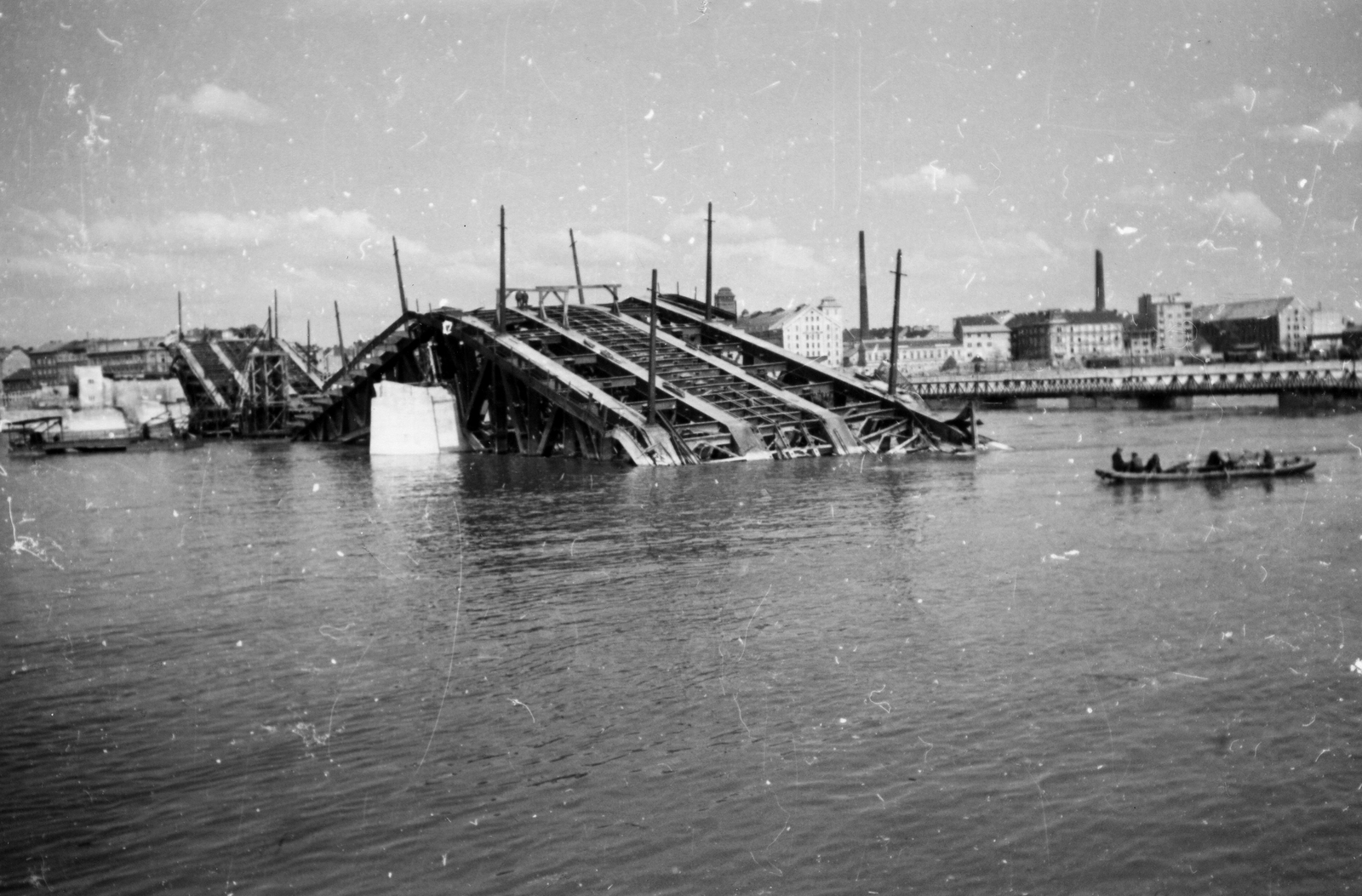
The blown-up Horthy Bridge (Photo: Fortepan/No.: 52041)
The Boráros Square bridge – known as Horthy Miklós Bridge– was completed by 1937, and within a few years, in 1939, the construction of the next crossing, the Árpád Bridge, also began, but the work was interrupted in 1943 due to the war.
After the war, a conference on 8 March 1948, convened by Minister of Transport Ernő Gerő, decided which bridge should be given priority. Gerő previously instructed the ministry's bridge department to investigate whether the Árpád Bridge could be completed with less iron than previously planned. The iron material was scarce, the smelters largely produced to meet the demands of Soviet reparations, so they economised where possible. To complete the Árpád Bridge, according to the original plans, 8,500 tons of iron were still needed, they wanted to save on this.
The ministry's bridge department proposed to continue the bridge with a narrower design. According to the original plans of the Árpád Bridge, it was a girder bridge with a ridge plate and an upper track, where four large main supports, i.e., ridge plates, ran parallel to each other, which held the tracks that had been built up to that point. The proposal was to build on the unbuilt part of the bridge with only the two middle main girders, which would be narrower, it would look quite strange, but it would be possible to drive on it, and a tram could also be run over it, not to mention only 4,500 tons of iron material would be necessary.
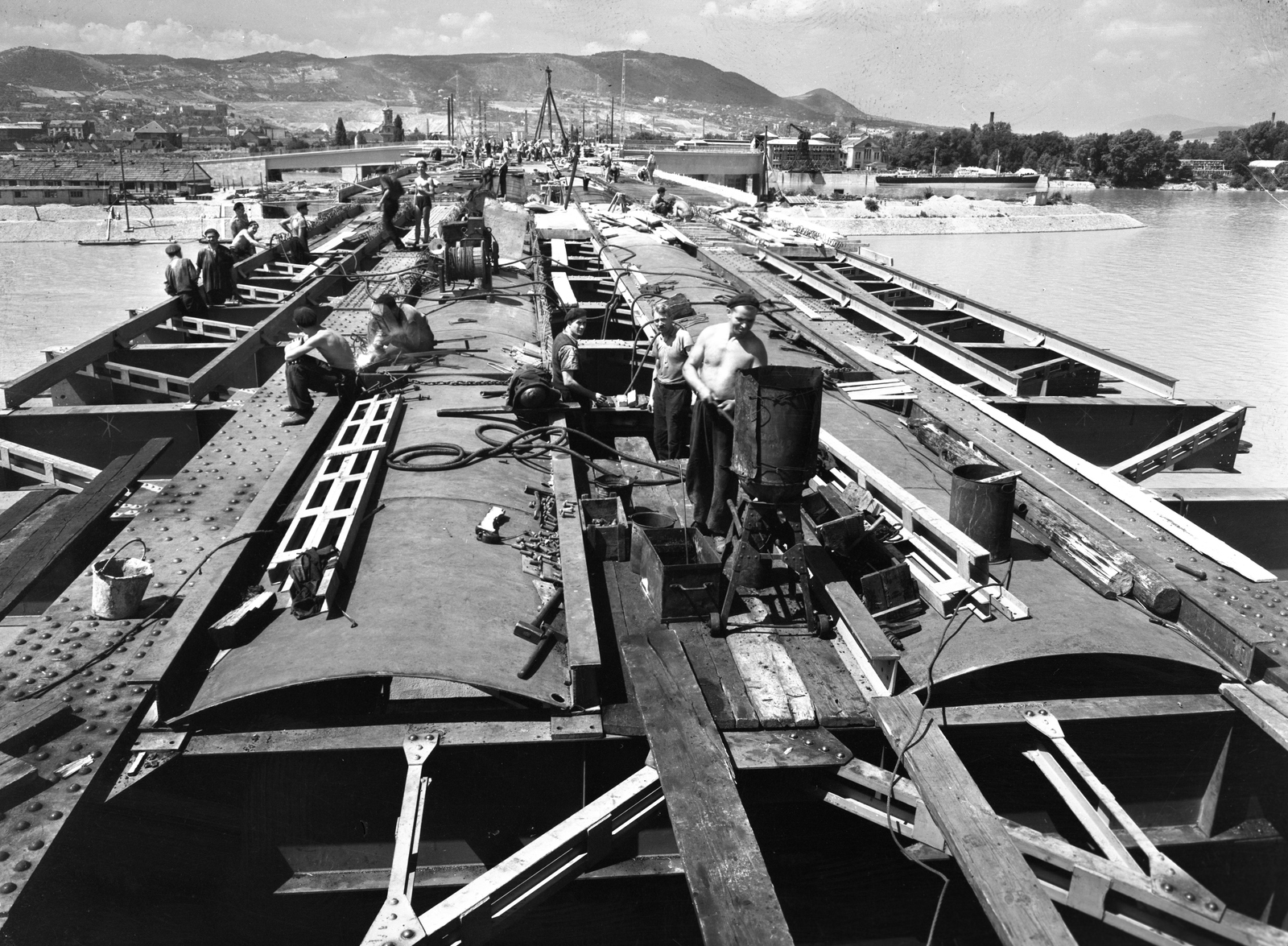
Construction of the Árpád Bridge in 1950. The worker on the left is sitting at the top of one of the main supports (Photo: Fortepan, UVATERV)
The other option would have been to rebuild the Boráros Square bridge, practically according to the original plans. However, a unanimous decision was made at the meeting that it is more important to have a bridge in the north, even if in such a strange way than to build the Boráros Square crossing in the south by 1950.
Among the reasons was that the people of Óbuda could get to the factories in Újpest more easily in this way, and on the other hand, the Árpád Bridge, which was to be built, could be temporarily used by the railway until the Újpest Railway Bridge, which was also destroyed in the war, was rebuilt (which did not happen until 1955) while a pontoon bridge can temporarily meet traffic needs at Boráros Square. This area of Buda, the Lágymányos part of today's 11th District, was barely developed, the Lágymányos housing estate did not yet exist, nor did so many people live in Kelenföld.
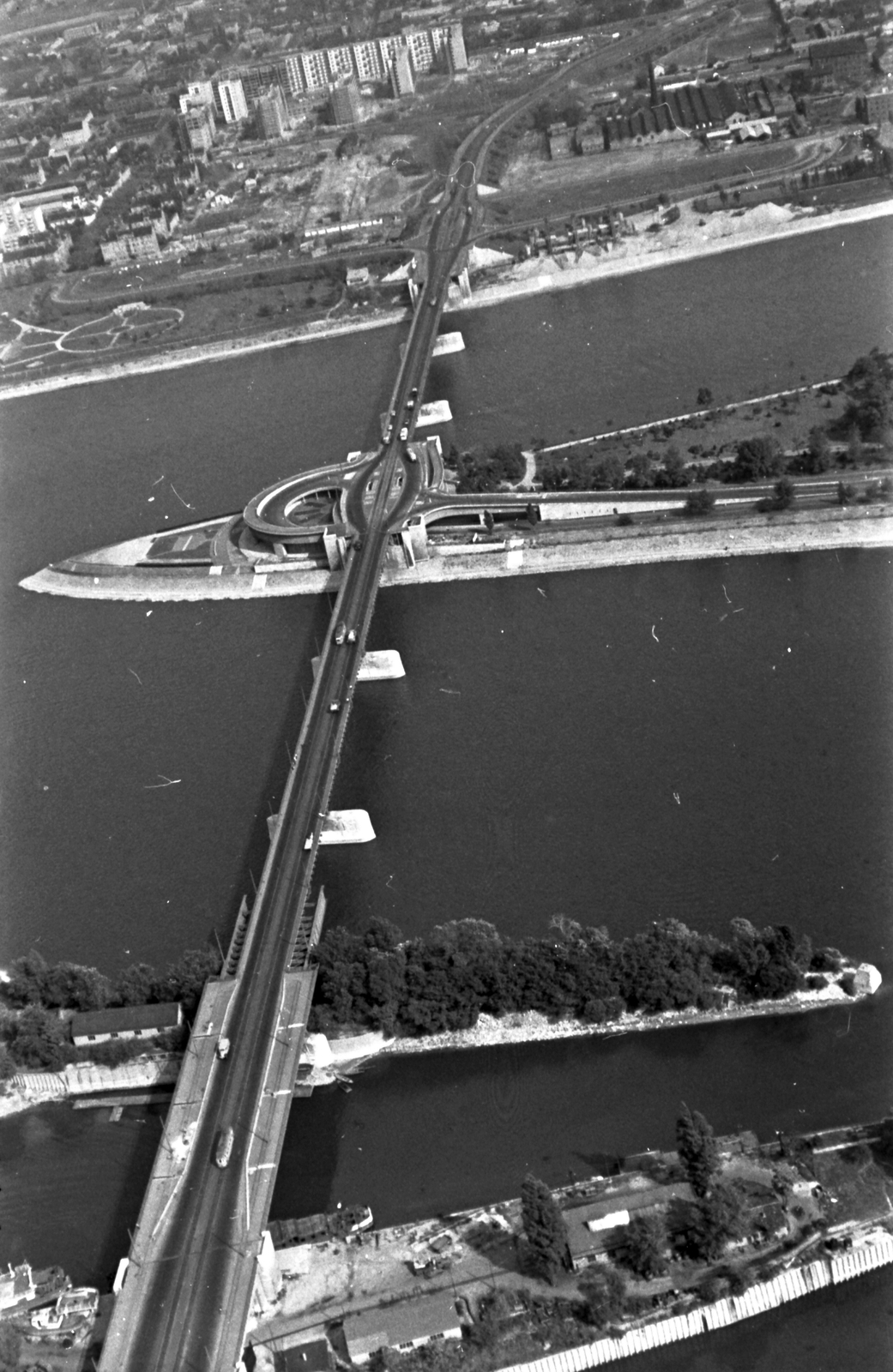
The picture clearly shows how the bridge narrows. It was like this until the reconstruction between 1981 and 1984 (Photo: Fortepan, MHSZ)
The decision in March 1948 was therefore that as soon as the reconstruction of the Margit Bridge was finished, the work should continue with the construction of the Árpád Bridge, and indeed, as the Margit Bridge was handed over on 1 August 1948, the workers marched to the Árpád Bridge the very next day.
The Árpád Bridge (officially known as the Stalin Bridge) was handed over on 7 November 1950. Until 1984, it looked like the bridge was wider on the Buda side, on the part that was completed by 1943, then the track narrowed at one point and continued narrower, on the structure that was built between 1948-1950. The bridge got its present shape between 1981 and 1984 when the two out of the four main girders of the sections built up to 1943 were dismantled, and a new bridge was built next to the old bridge on the right and the left. Trams can travel on the old bridge, and road vehicles can travel on the two new structures.
Construction of the Boráros Square bridge began after the Árpád Bridge was handed over, and it was completed in 1952, this is today's Petőfi Bridge.
Cover photo: The Árpád (Stalin) Bridge seen from Óbuda in 1950 (Photo: Fortepan/No.: 91410)

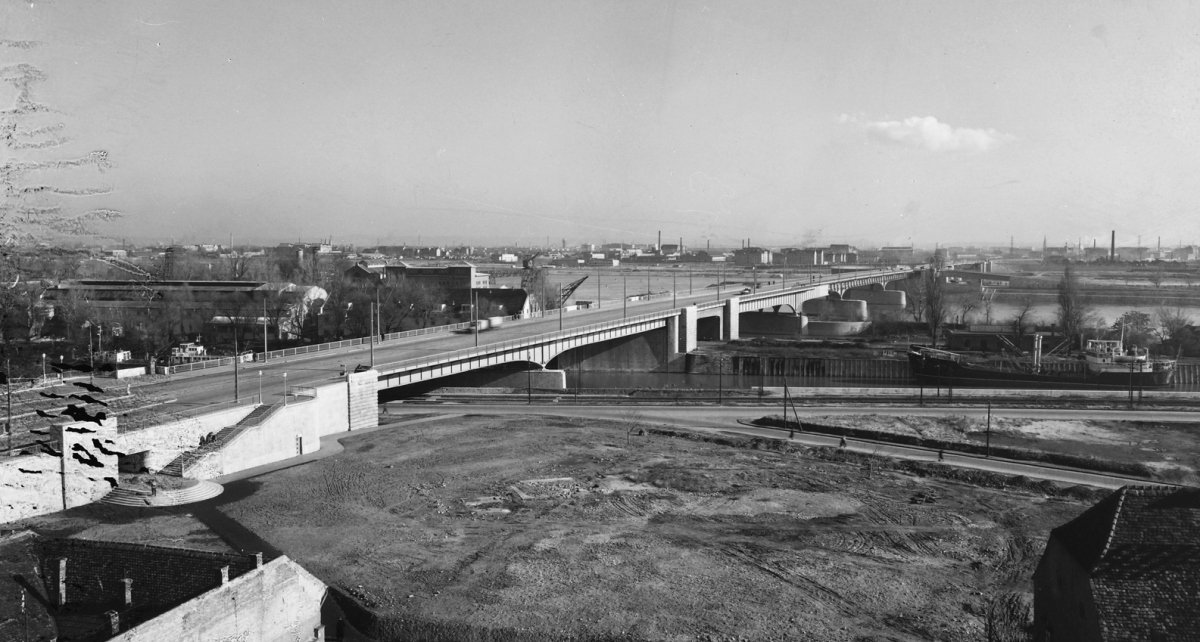

































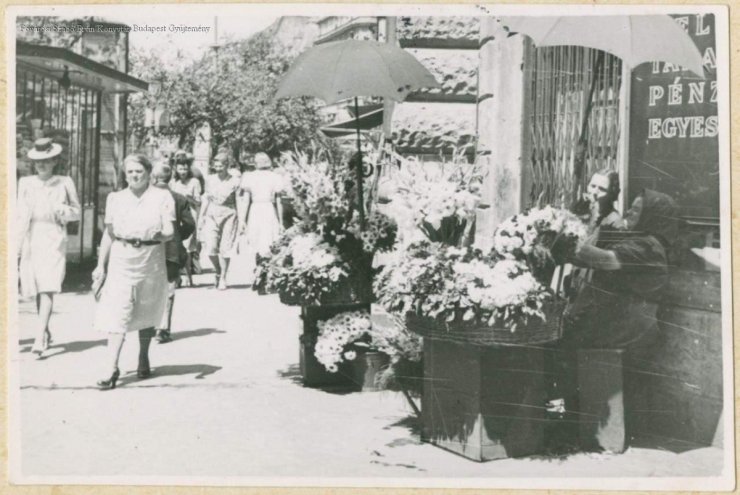
Hozzászólások
Log in or register to comment!
Login Registration